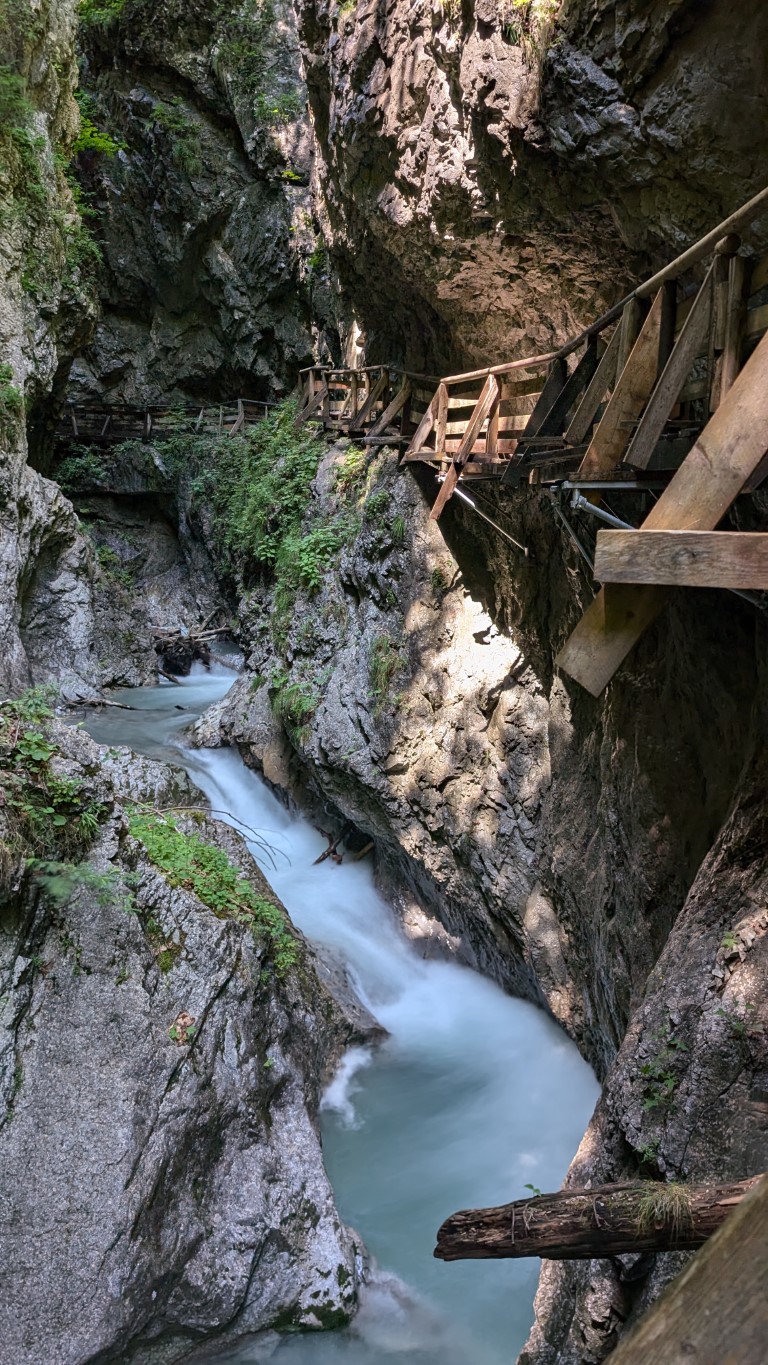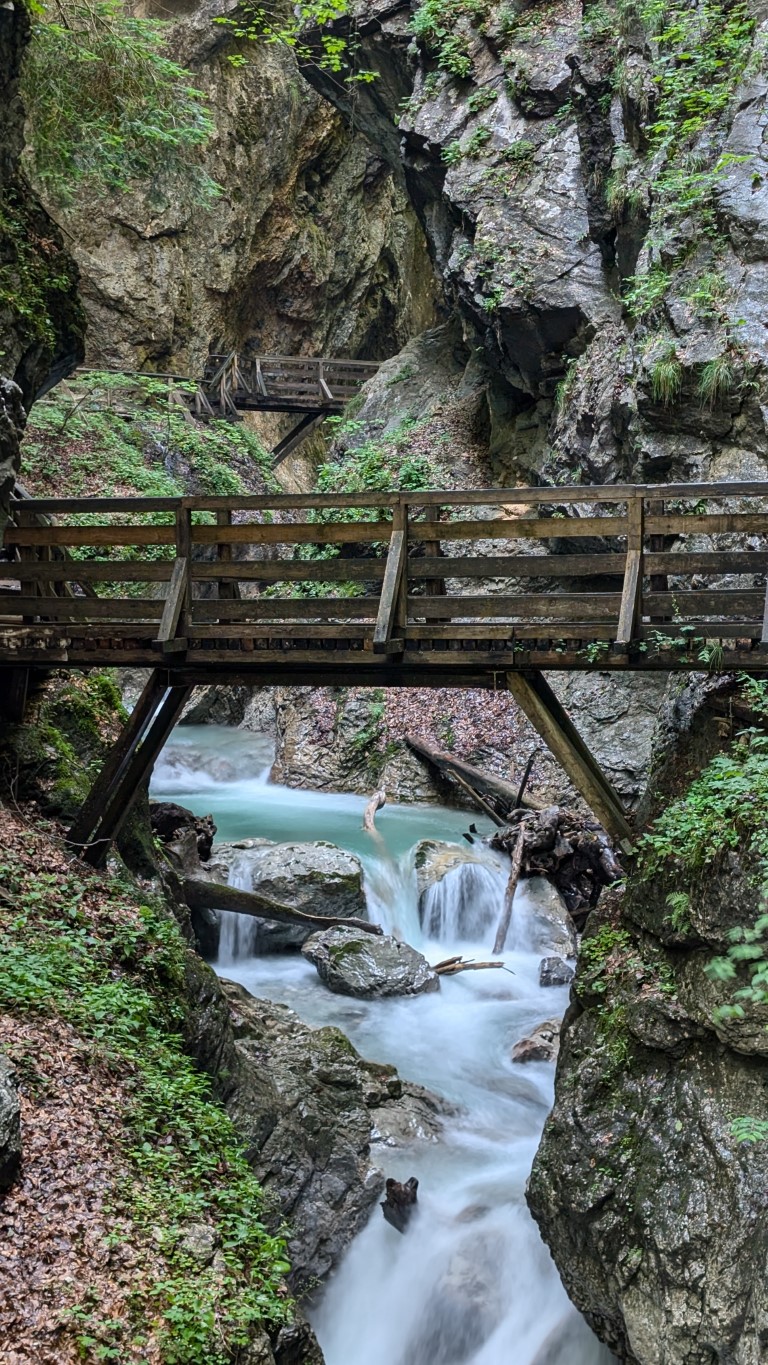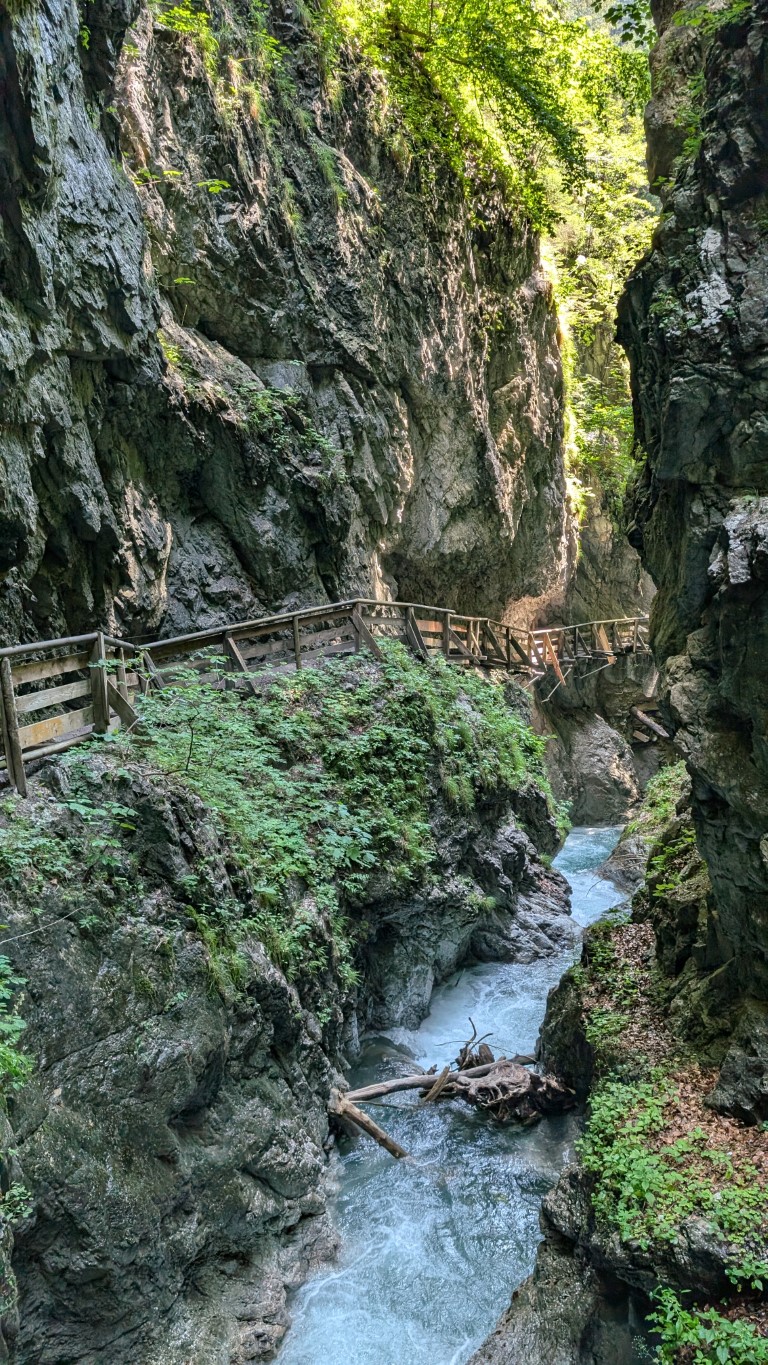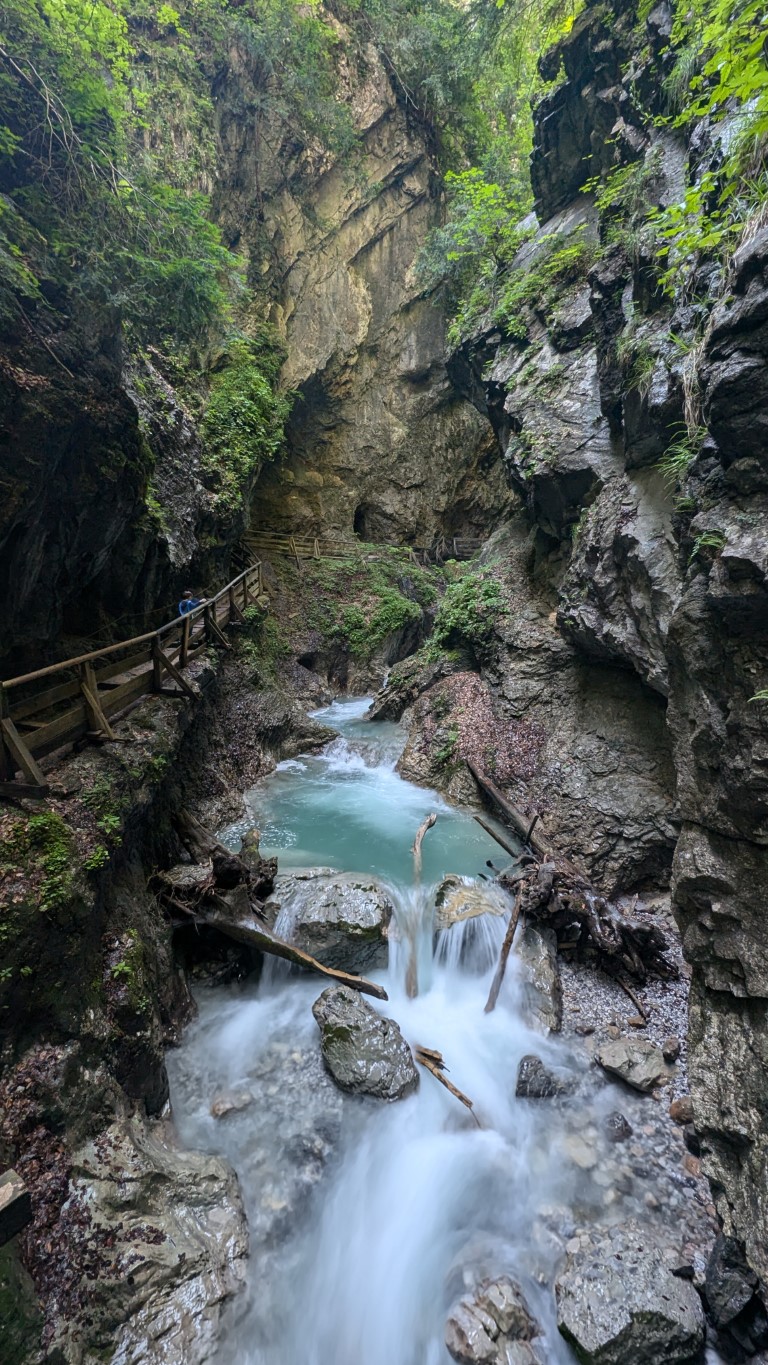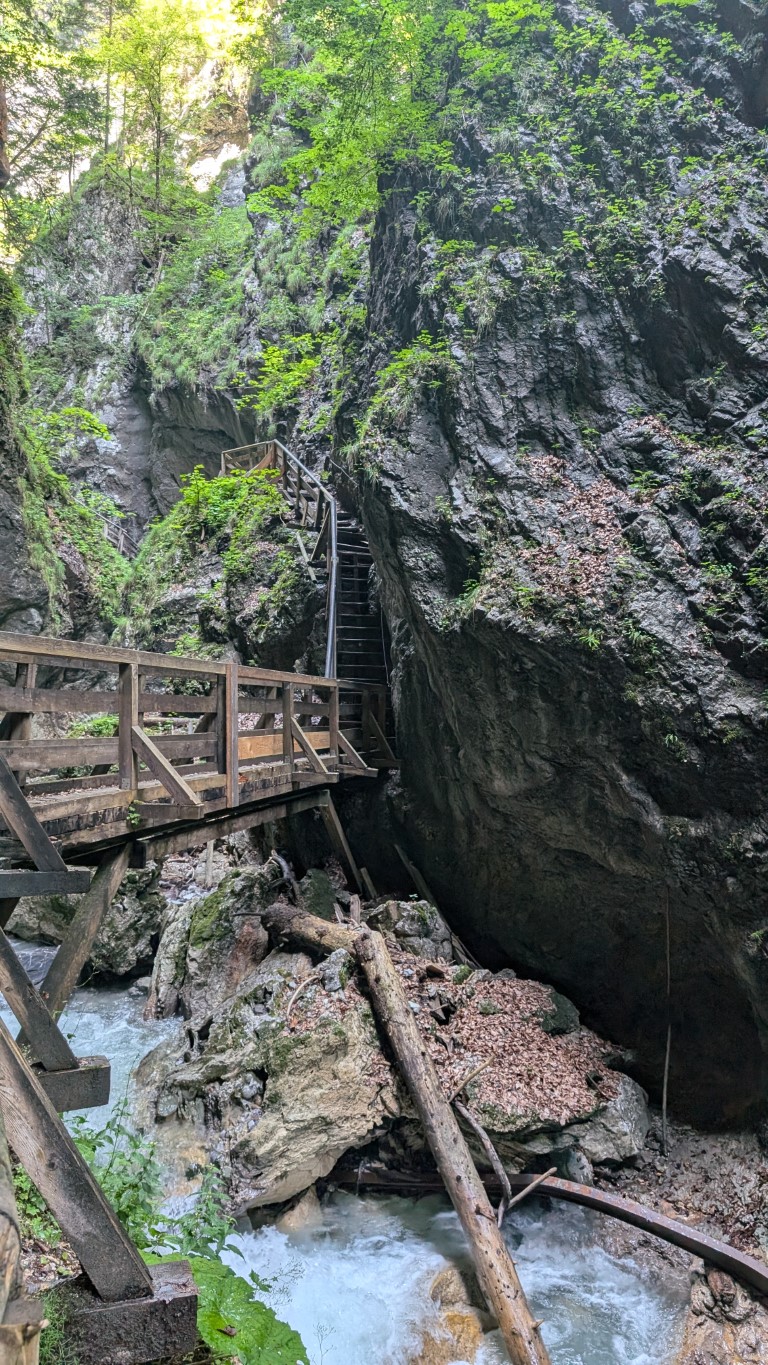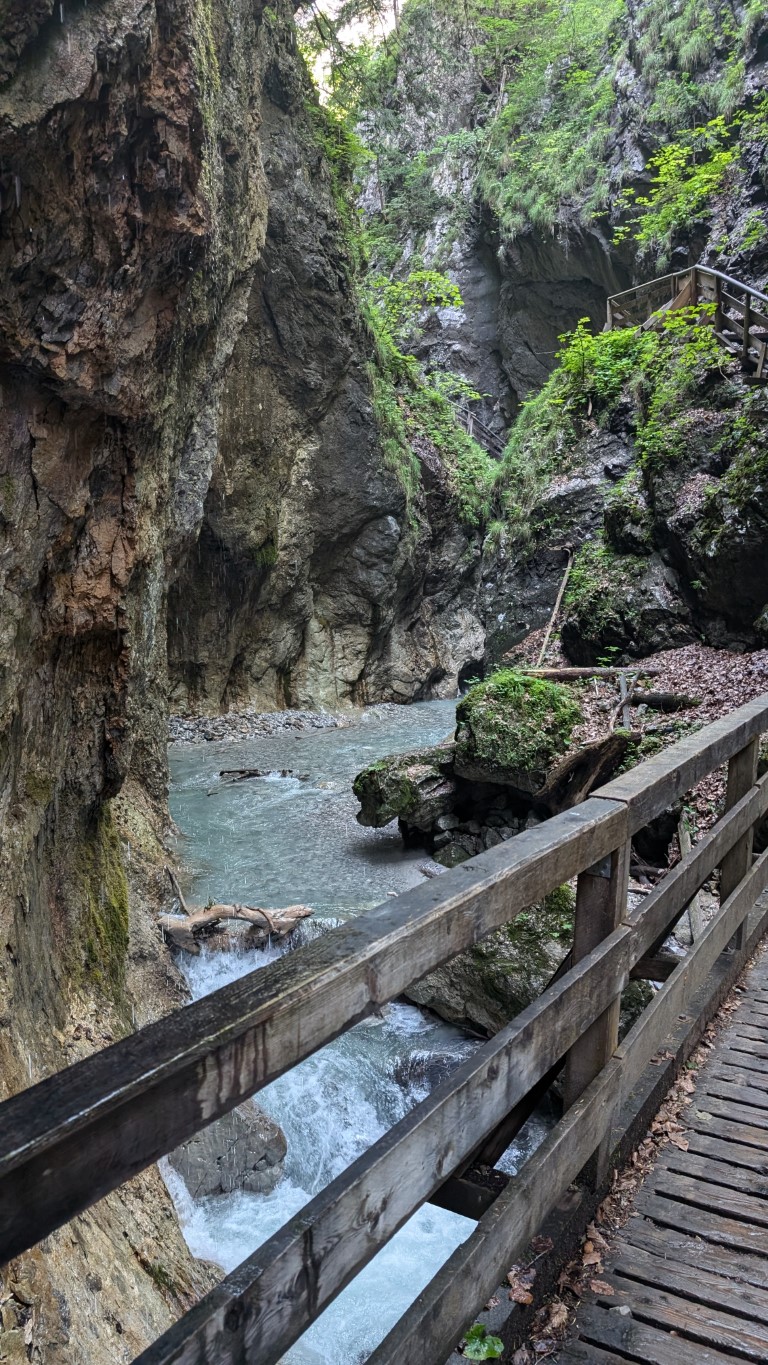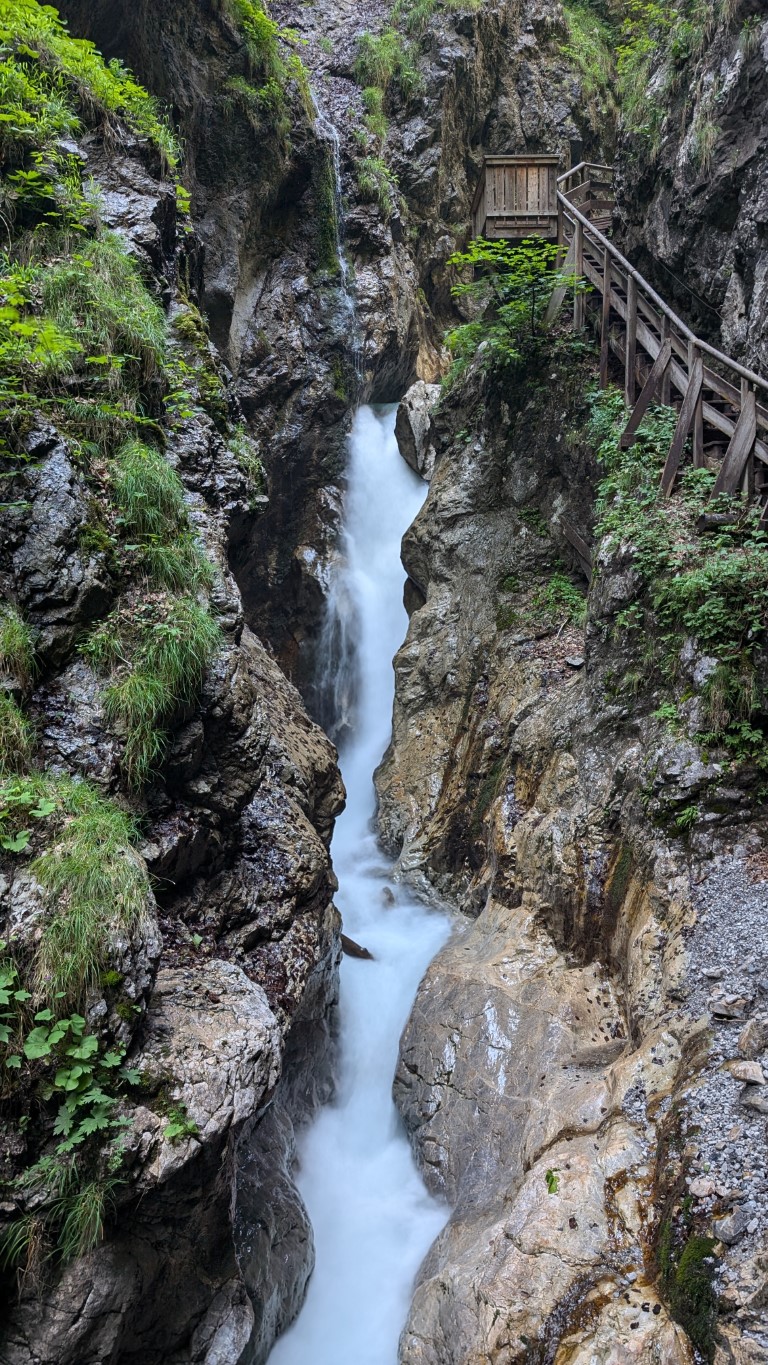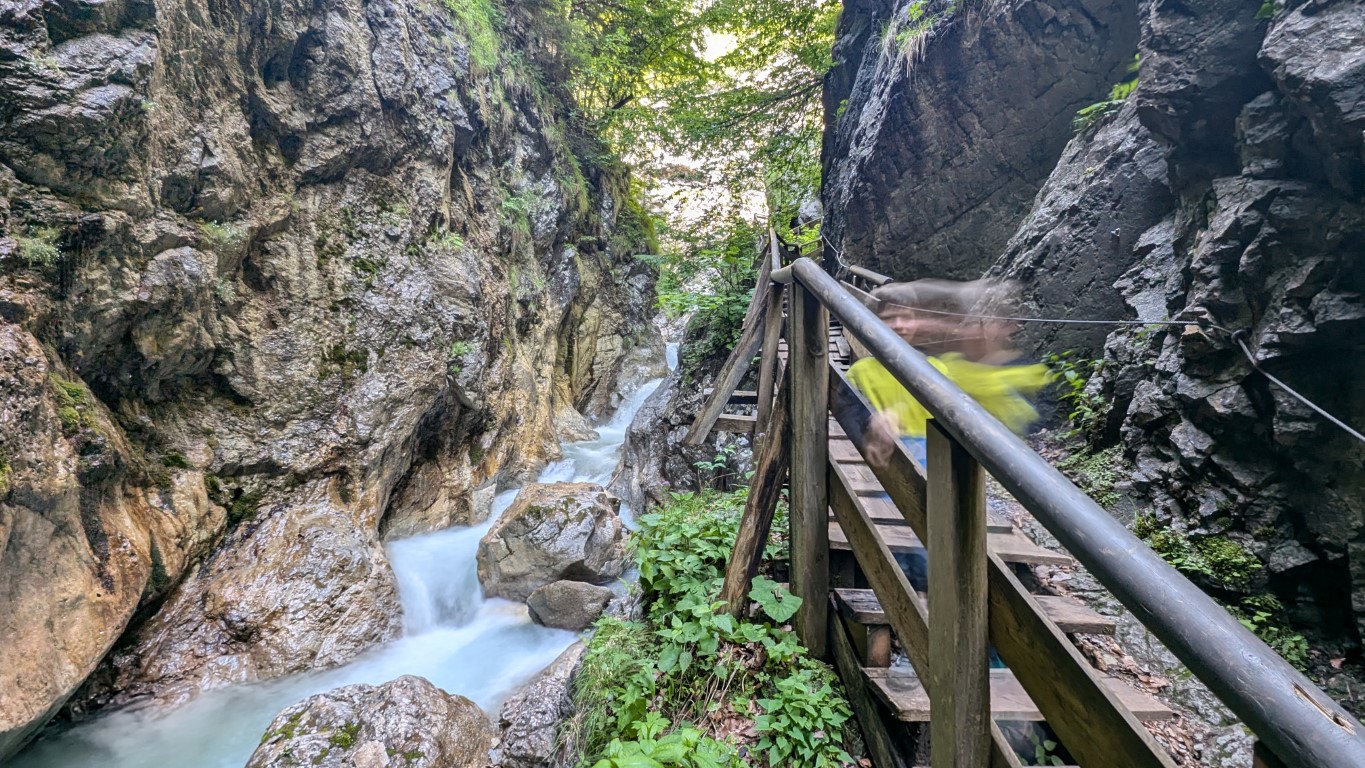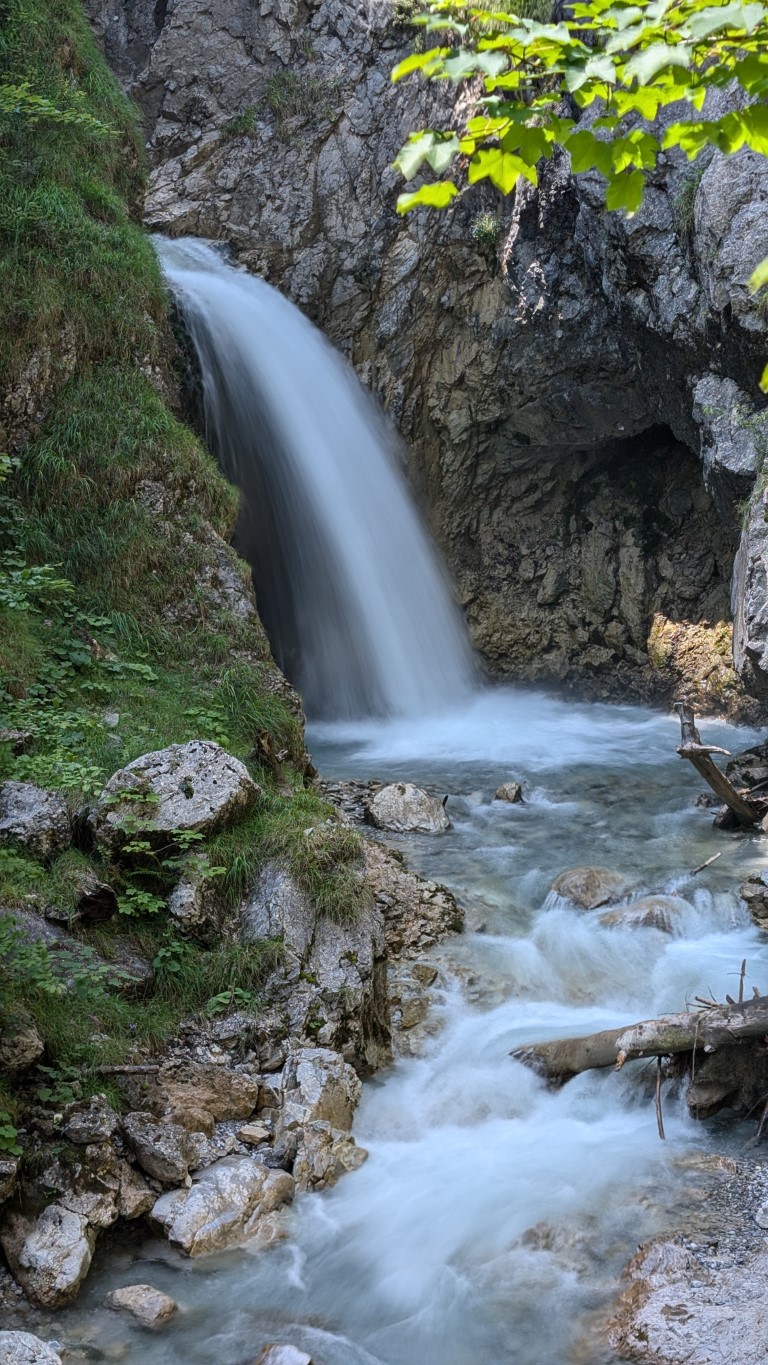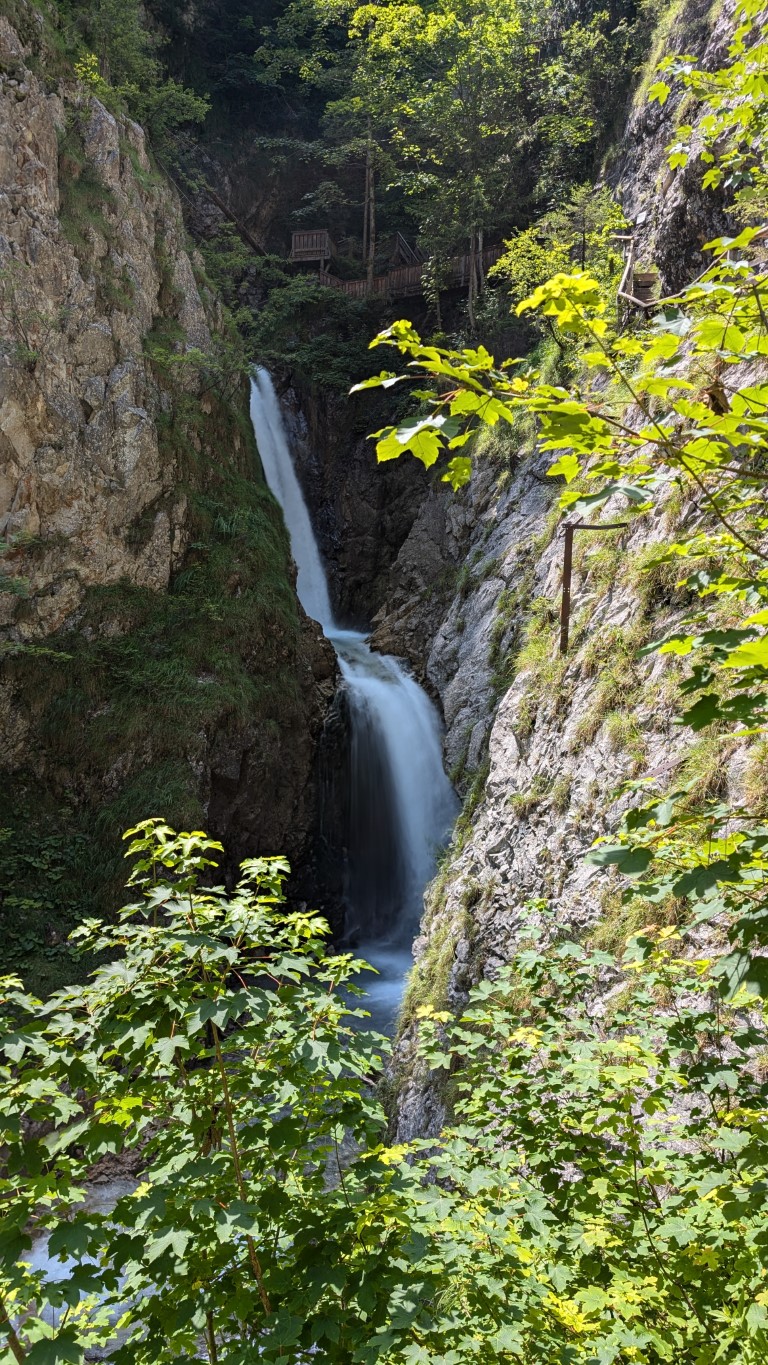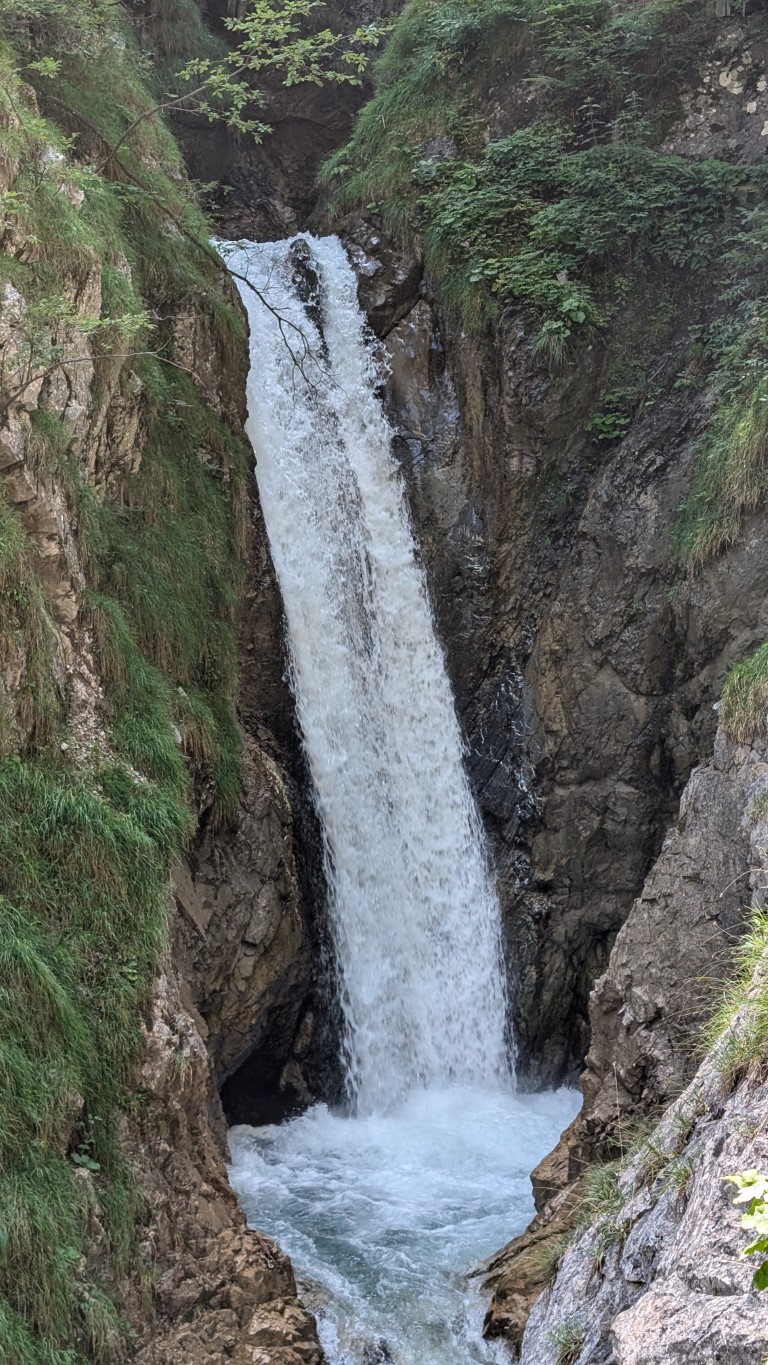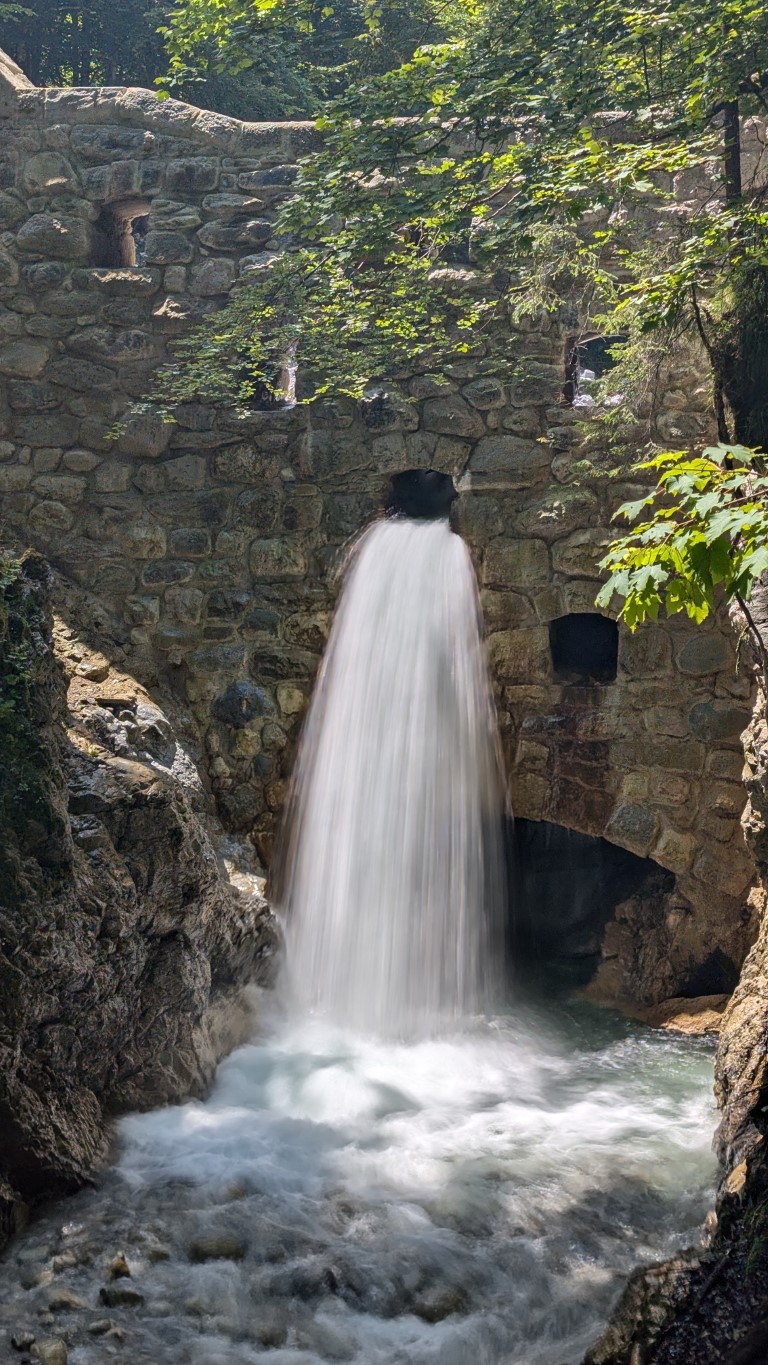The Wolfsklamm in Stans enchants nature lovers with rushing waterfalls, emerald green pools and refreshing spray. The roaring waters of the Stans stream and the swaying bridges make a hike through this impressive Tyrolean gorge an unforgettable adventure. The gorge offers a welcome cooling off, especially in summer.
Around 350 steps, wooden walkways and galleries carved into the rock lead through the Wolfsklamm up to the pilgrimage monastery of St. Georgenberg, the oldest pilgrimage site in Tyrol. In the charming garden, the hosts of the pilgrimage inn spoil guests with traditional, regional delicacies. The climb from Stans to St. Georgenberg takes around 1½ hours. For the way back, you can take the Way of the Cross via "Weng" or the route via "Maria Tax".
The legend of the wolves
Normally, gorges are named after the rivers that flow through them, such as the Gleirschklamm after the Gleirsch or the Partnachklamm after the Partnach. The Wolfsklamm near Stans, on the other hand, owes its name to the wild wolves that once nursed their young in the many caves in the area. Whether this story is true remains uncertain, as the large predators are now extinct.
A sad fact, however, is the killing of the last bear in Tyrol nearby. On May 14, 1898, the animal was killed by Count Konstantin Thun in the neighboring Stallental.
Story
The Wolfsklamm, often referred to as the "most beautiful gorge in Tyrol", is one of the most impressive natural wonders in the country. Its name probably comes from a time when wolves, bears and lynx roamed the surrounding forests and used them as a place of refuge. Over millions of years, the wild waters of the Stallenbach, Gamsbach and Georgenbergerbach formed the unique gorge, which today attracts thousands of visitors every year.
With the opening of the first Kneipp spa nearby in 1890, interest in the gorge increased, and the first hiking trail was created in 1901. But floods, avalanches and rockfalls repeatedly destroyed the paths until a new, safer path was finally opened in 1936. Further reconstructions after disasters followed, and the gorge was reopened in 1957.
In addition to its geological and historical significance, the Wolfsklamm is also a valuable biotope with unique flora and fauna, including Austria's largest orchid and the rare Turk's cap lily. Today the gorge is an important recreational area and a popular destination in the Karwendel Nature Park, known for its fresh air and soothing nature.
Access
The Wolfsklamm opens its doors every year from May 1st to October 31st and welcomes visitors from 9 a.m. to 4 p.m. If the golden autumn bathes the gorge in warm light and the weather plays along, you can even enjoy this natural spectacle until mid-November.


